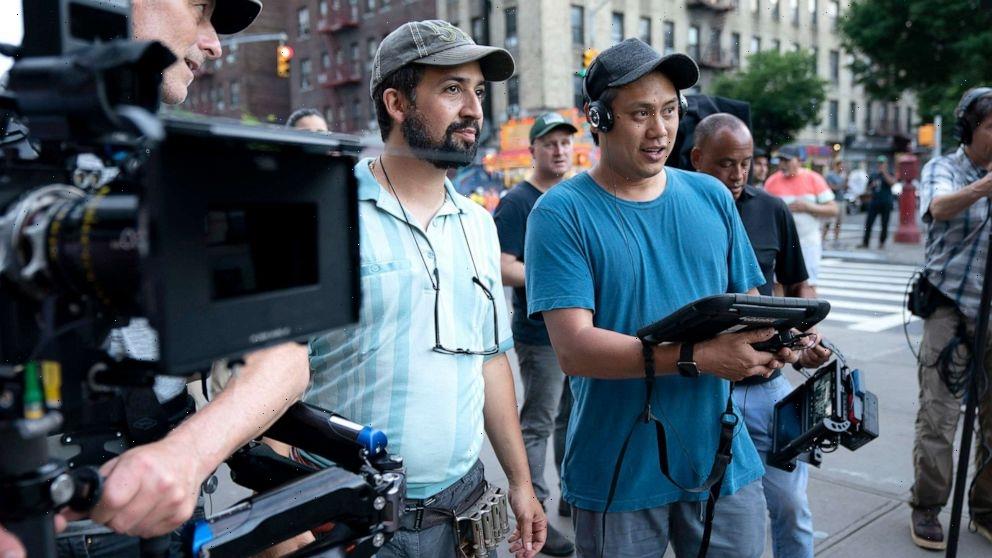Lights up on Washington Heights! This predominantly brown and Black New York City neighborhood and its people are the stars of the new film “In The Heights.”
The movie premieres on HBO Max on June 10 and in movie theaters on June 11.
“In The Heights” screenwriter Quiara Alegría Hudes said films that explore the Latinx community are long overdue.
“The more of us telling these stories, the better,” Alegría Hudes told ABC News. “I hope people walk away with a real sense of connection and also just a sense of joy because it’s a real celebration. The movie is about feeling good in a community, even with struggle, rising above, and the triumph and the joy of togetherness.”
The musical illustrates “a couple of days in the life of what it’s like” in the Latinx neighborhood that’s “slowly disappearing,” the film’s main character, Usnavi, says. Local business owners and residents are displaced by rising rents and gentrification — a reflection on the real-world troubles faced by New Yorkers of color every day. The movie also captures the resiliency, joy and camaraderie among the community facing these obstacles together.
“In The Heights” has signaled a shift in the film industry. Hollywood seems to now be taking Latinx-American perspectives seriously and letting people of color tell these culturally nuanced stories.
Between 2007 and 2018, Latinx actors accounted for only 4.5% of speaking or named roles, according to research by USC Annenberg. Latinx writers and directors represented less than 5% of the industry in 2020, the 2021 Hollywood Diversity Report. Latinxs make up about 18% of the U.S. population.
“Our Latino artistry, our Latino stories, are as diverse as our American stories,” Alegría Hudes said. “So if you already did one — great, do another. Do the third one. Do the fourth one.”
Movies with casts that were “at least 21% minority” had the highest online viewing ratings among all racial groups in the 18 to 49 age range, according to the Hollywood Diversity Report. Latino and Black adults consumed streaming content more than other groups, the study found.
“Increasingly diverse audiences want diverse content,” Ana-Christina Ramón, director of Research and Civic Engagement at the University of California, Los Angeles, told ABC News. “That’s something that the studios have taken note of and, with varying degrees, they’ve actually kind of put more focus on it.”
Her research into the viewership and representation trends in the film industry captures an important shift: Diversity sells.
Films are catching up; people of color overall accounted for almost 40% of the leads in top films in 2020, which is the highest share on record, according to the Hollywood Diversity Report.
Not seeing Latinx characters on the big and small screen can have damaging effects, according to Ramón. Media is a socialization agent, so damaging Latinx stereotypes and a lack of representation can affect the way broader society views this group, she said.
“Researchers from the ’70s coined this term called ‘symbolic annihilation.’ And that’s if you don’t exist in the media, in terms of media representation, it’s a form of symbolic annihilation … it affects policies, what kind of services we receive and what kind of benefits we receive,” Ramón said.
“And visual representation might be there but you want a meaningful representation,” she added. “And I think you get meaningful representation when the filmmakers are people from the community that’s being represented on screen.”
She said that by documenting these data points in her research, she can accurately capture what these audiences want and how Hollywood can keep up.
It starts with investment in filmmakers, showrunners, casting directors and executives of color from different marginalized communities, according to Rafael Augustin, the executive director of the Latino Film Institute.
The Latino Film Institute, which just hosted the Los Angeles Latino International Film Festival, invests and recruits talent from the community to ensure that young creatives have a good support system in the predominantly white space.
“We realized very early on that the answer to #OscarsSoWhite is not changing the voting regulations,” Augustin said. “It’s really about developing communities of color and historically marginalized communities at an early age.”
Augustin said the Latino Film Institute provides a space for up-and-coming creators that Hollywood has yet to truly provide.
“The talent is there, it’s always been there,” Augustin said. “What we have lacked historically as a community in Hollywood is access and funding for our stories.”
Nina, one of the film’s lead characters, goes to Stanford University. She’s the first in her family to go college and her community is proud of her. But in California, she doesn’t feel welcomed by the predominantly white, wealthy university. There’s pressure to succeed and also pressure to represent her Latinx heritage and community, Alegría Hudes said.
“In some ways, Nina’s story is also the story of ‘In The Heights’ in Hollywood,” Alegría Hudes said.
Source: Read Full Article





